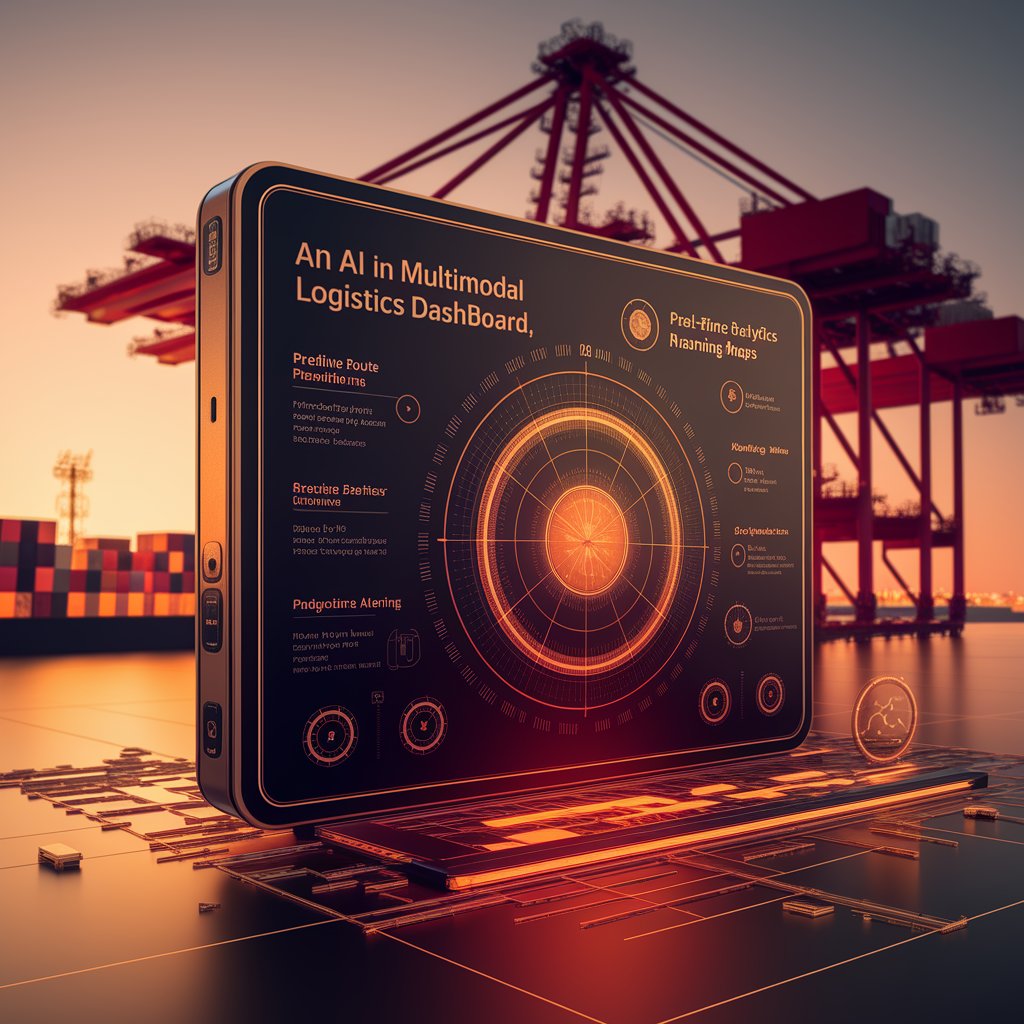AI in Multimodal Logistics: Connecting Global Supply Chains with Intelligence

Introduction
That’s where AI in multimodal logistics makes the difference. By applying artificial intelligence to multimodal networks, companies gain predictive insights, real-time visibility, and adaptive decision-making that optimizes global freight flows.
What Is AI in Multimodal Logistics?
AI in multimodal logistics refers to the use of artificial intelligence to optimize planning, execution, and monitoring of supply chains that use multiple modes of transport. AI analyzes massive datasets—traffic conditions, port congestion, carrier schedules, and customs delays—to deliver smarter decisions.
Instead of static planning, AI enables dynamic, predictive logistics coordination that aligns resources, reduces risks, and ensures timely deliveries.

Key Features of AI in Multimodal Logistics
- Predictive Route Planning – Forecasts optimal transport mode combinations.
- Real-Time Tracking – Unified visibility across sea, air, road, and rail.
- Capacity Forecasting – Anticipates shortages and matches demand with supply.
- Dynamic Rerouting – Suggests alternative routes during disruptions.
- Customs & Compliance Automation – AI reduces border delays with digital validation.
- Integrated Dashboards – Centralized intelligence for logistics managers.
Benefits of AI in Multimodal Logistics 📈
- Cost Optimization – Balance speed and cost by selecting the best mode mix.
- Improved Reliability – Ensure shipments arrive on time despite disruptions.
- Efficiency Gains – Automate scheduling and reduce manual coordination.
- Resilience – Adapt quickly to congestion, strikes, or weather events.
- Customer Confidence – Provide accurate ETAs across multiple transport legs.
- Sustainability – Optimize greener transport combinations.

Real-World Applications
- Freight Forwarders – Plan multimodal routes that secure capacity and reduce costs.
- Carriers – Balance fleets across road, rail, and sea to avoid bottlenecks.
- E-commerce Logistics – Guarantee fast, reliable deliveries across regions.
- Cold Chain Providers – Ensure compliance and reliability for sensitive shipments.
- Global Manufacturers – Coordinate raw material and product flows efficiently.
Challenges in AI for Multimodal Logistics
- Data Fragmentation – Different transport modes operate on separate systems.
- Integration Complexity – Legacy ERP, TMS, and customs platforms complicate adoption.
- High Initial Costs – Advanced AI platforms require significant investment.
- Cybersecurity Risks – Sensitive trade and routing data must be secured.
- Change Resistance – Carriers and partners may resist shifting to AI-driven systems.

Best Practices for Success
- Start with High-Value Trade Routes – Apply AI where multimodal costs are highest.
- Unify Data Sources – Integrate ERP, WMS, TMS, and IoT feeds.
- Use Predictive Analytics – Forecast delays and optimize transport mix.
- Leverage Dynamic Rerouting – Build flexibility into multimodal plans.
- Train Teams & Partners – Encourage adoption across carriers and stakeholders.
- Measure ROI Continuously – Track cost savings, service improvements, and resilience.
The Future of AI in Multimodal Logistics 🚀
- Digital Twin Networks – Simulate multimodal operations in real time.
- Blockchain Integration – Transparent and secure cross-border freight documentation.
- Autonomous Decision Engines – AI managing multimodal coordination end-to-end.
- Edge AI for Transport – Localized intelligence at ports, warehouses, and hubs.
- Green Multimodal Optimization – AI prioritizing sustainability alongside cost and time.
Conclusion
AI in multimodal logistics is transforming how global supply chains operate. By enabling predictive planning, real-time adjustments, and intelligent mode selection, AI empowers companies to reduce costs, improve efficiency, and build resilience.
For freight forwarders, carriers, and shippers, investing in AI in multimodal logistics isn’t just a digital upgrade—it’s the foundation for smarter, adaptive supply chains.
